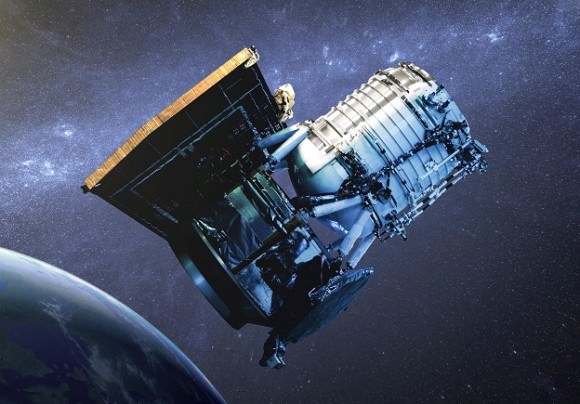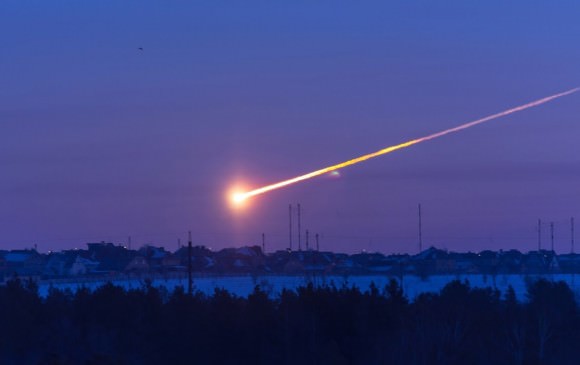Of the more than 600,000 known asteroids in our Solar System, almost 10 000 are known as Near-Earth Objects (NEOs). These are asteroids or comets whose orbits bring them close to Earth’s, and which could potentially collide with us at some point in the future. As such, monitoring these objects is a vital part of NASA’s ongoing efforts in space. One such mission is NASA’s Near-Earth Object Wide-field Survey Explorer (NEOWISE), which has been active since December 2013.
And now, after two years of study, the information gathered by the mission is being released to the public. This included, most recently, NEOWISE’s second year of survey data, which accounted for 72 previously unknown objects that orbit near to our planet. Of these, eight were classified as potentially hazardous asteroids (PHAs), based on their size and how closely their orbits approach Earth.
Originally launched back in 2009 as the Wide-field Survey Explorer (WISE), the spacecraft relied on its infrared telescope to look for previously undetected star clusters and main belt asteroids. In February of 2011, the mission ended and the spacecraft was put into hibernation. As of December 2013, it was reactivated for the purpose of surveying Near-Earth Objects (i.e. comets and asteroids) for the remainder of its service life.

This mission not only involves scanning for NEOs at infrared wavelengths, but also characterizing previously known asteroids and comets to provide information about their sizes and compositions. James Bauer, the mission’s deputy principal investigator, explained NEOWISE’s operations to Universe Today via email:
“NEOWISE detects asteroids and comets, both near to Earth and further away, in the asteroid Main Belt for example, using infrared light. Because we look in the thermal infrared, the part of the spectrum where these small solar-system bodies are re-emitting the light they absorbed at other wavelengths, we can detect some of the darkest ones more easily than ground-based observatories, which look at their reflected light from the Sun. We can also get a better idea of the sizes, based on how much infrared light they re-emit. This way we detect and characterize Near Earth Objects that we may want to visit in the near future, and find new ones that may present impact risks as well as opportunities for exploration. NEOWISE has detected over 500 NEOs to date, including more than 81 discovered.”
Paired with ground-based telescopes that examine space in visible-light wavelengths, the data it has provided has told us much in the past two years about asteroids within our Solar System. Since beginning its “second life”, the NEOWISE mission has taken millions of images of the sky and measured more than 19,000 asteroids and comets.

In addition to characterizing thousands of asteroids and identifying several new ones, the surveys revealed some interesting facts about NEOs that will make monitoring them easier, and help us mount missions to one someday. As Dr. Amy Mainzer, the principal investigator of the NEOWISE mission at NASA’s Jet Propulsion Laboratory, told Universe Today via email:
“NEOWISE results indicate that about a third of the NEOs are extremely dark, which affects how we plan future surveys. With our IR measurements, we can determine NEO sizes, which helps us figure out how much energy a potential impactor would have. Objects that make close approaches to Earth offer both opportunity and risk: asteroids that make close approaches are more likely to be easier to get to from Earth. By finding close approaching NEOs, we can also find the most accessible destinations for future exploration.”
Of the 19,000 asteroids studied, the mission team was able to identify 439 of them as NEOs, and further determined that eight of them can be classified as potentially hazardous asteroids (PHAs). But before anyone gets to worrying that these objects might collide with us someday, it would be good to keep some statistics in mind.
For starters, since NASA and other space agencies began searching the Solar System for asteroids that have orbits that bring them close to Earth, some 14,166 NEOs have been discovered. What’s more, the vast majority (over 13,000) have only been discovered since the year 2000, and over half since 2010. Of these, roughly half (7077) measure 140 meters in diameter.

Sounds scary, doesn’t it? But not so much when you consider that of these, only 879 are large enough to ever pose a serious threat to Earth (i.e. measuring 1 km or more in diameter). And whereas small objects (i.e. those averaging 4 meters or 13 feet in diameter) strike Earth about once a year, asteroids measuring 1 km or more in diameter have been known to hit Earth at an average of only twice every one million years.
Of course, incidents like the Chelyabinsk meteorite (which measured 20 meters in diameter) remind us that even small NEOs that break up in the atmosphere can have a damaging effect – which in this case included 1,491 reported injuries and $33 million USD in property damage. However, the vast majority of the injuries caused by the airburst explosion were due to a lack of prior warning. Had the population been warned in advance, it is likely that most (if not all) of the injuries could have been prevented.
Knowing precisely where NEOs (and PHAs) are with respect to Earth, their sizes, and what paths their orbits will take, are all crucial to making sure that, in the unlikely event that any of them hit Earth, that they don’t cause harm. And thanks to NEOWISE, we’ve now got tabs on eight more of them. And until such time as we can create some kind of orbital defense platform to shoot incoming PHAs (I’m thinking guided missiles and laser guns!) knowing is all of the battle!
And be sure to check out the new NASA movie below, which beautifully visualizes the data collected by NEOWISE so far:
Further Reading: NASA


Dr. Amy Mainzer is brilliant! Couldn’t find a better principal investigator for the NEOWISE mission! Still, the proposed B612 society Sentinel satellite is a GREAT idea! Lets get on with it!
It is sad to see that the interest level and excitement after the Chelyabinsk incident has pretty much flat-lined in the west? Seriously, it might take a small meteorite hitting Wall Street to get anything done in the USA? Russia has plans to reconfigure a nuclear tipped ICBM to test using nukes for diverting an NEO. The technique is reportedly to be used only as a ‘last chance’ emergency effort for a late detection, since no one really knows what would happen if we popped off a nuke close to a rocky body… radioactive shrapnel anyone?
The biggest damaging effect a nuclear device has is the shock wave through the atmosphere. Without an atmosphere, the shock wave is rather small for the fireworks show it will have. Suddenly, a nuke doesn’t look like the good option it seems to be. Possibly if it were to bury itself and exploded a large asteroid into thousands of small ones that would burn up in the atmosphere, then it might be practical.
Quite right, the only material for a shockwave would be the bomb casing and lots of gamma rays; kinetic small change compared to even small space rocks. Surface vaporization would deflect it but calculating the deflection would be very difficult an0d you might make things worse. Even if we track them all, a last minute perturbation or collision could leave us with not enough time. We need something kinetic that can take rogue NEOs out at short notice but it will be politically difficult to get what is effectively a space-borne WMD deployed, maybe the multi-national ISS would be a suitable platform.
Au contraire… While an air burst shock wave from a nuclear explosion IS very destructive, the thermal, UV and gamma RADIATION is way off the charts. The photon pressure is enough to vaporize most matter. The atmosphere ABSORBS much of the explosive blast, while in space the radiation is not absorbed by the atmosphere and only diluted by distance squared from the event or by impacting nearby objects/mass.